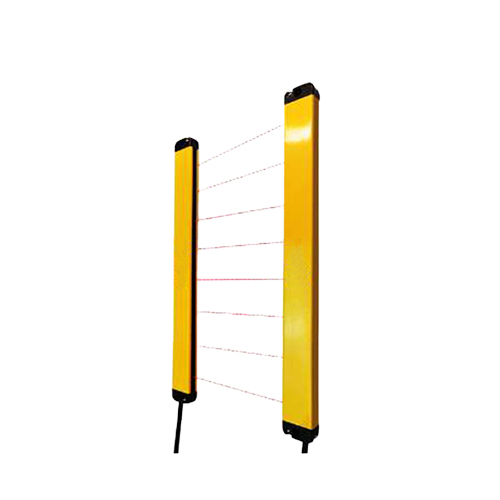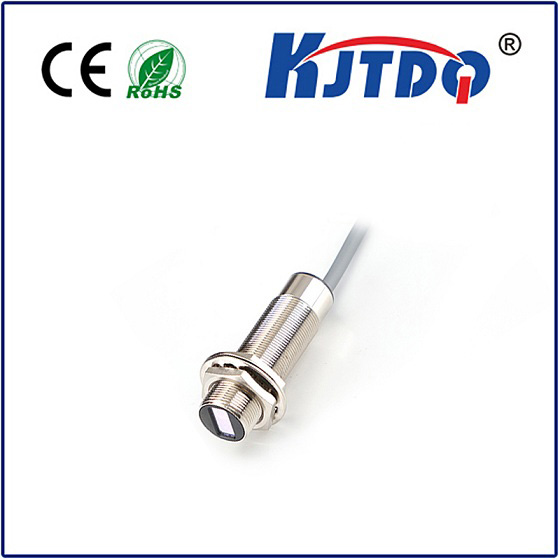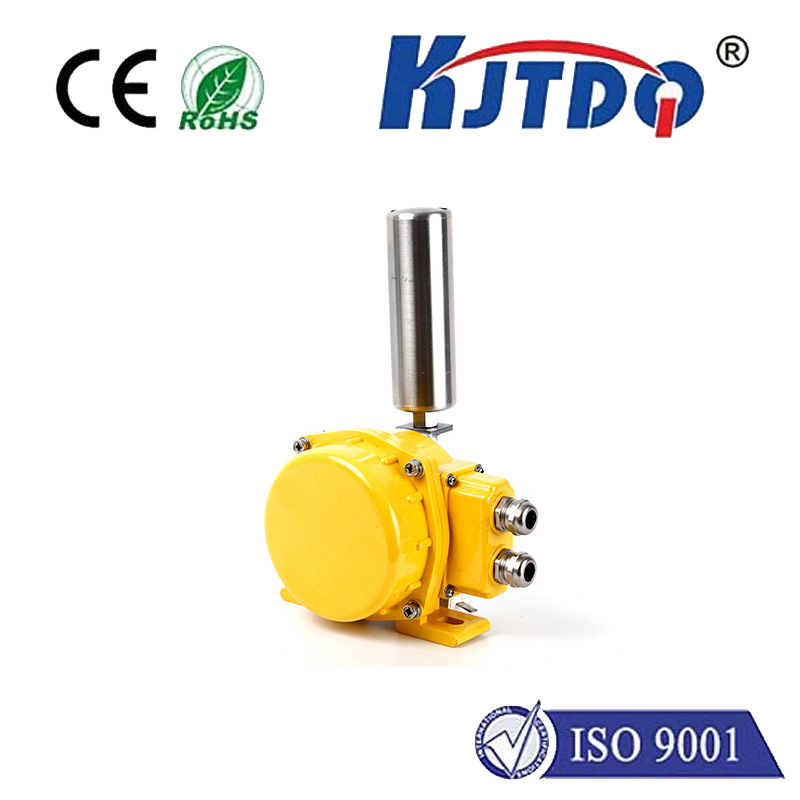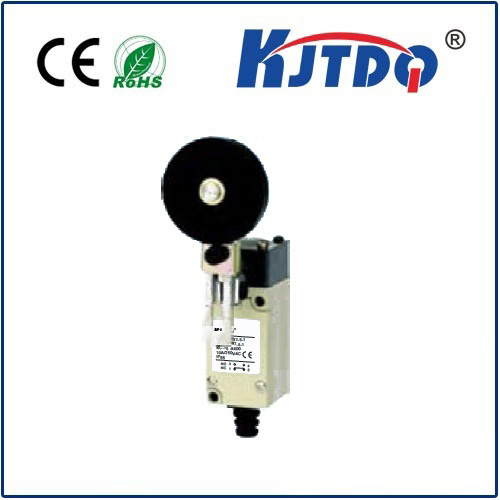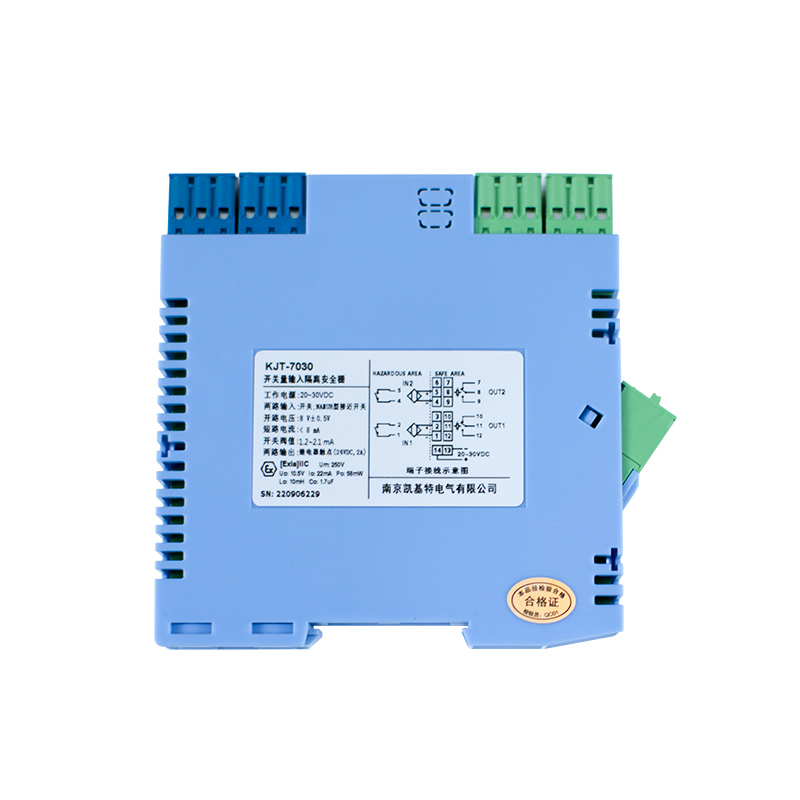E3FA-RN22 24v photoelectric sensor
- time:2025-09-28 00:00:03
- Click:0
The E3FA-RN22 24V Photoelectric Sensor: Precision Detection for Demanding Industrial Automation
In the intricate dance of modern manufacturing and logistics, reliably detecting the presence, absence, or position of objects is fundamental. This tiny action ripples out, triggering complex sequences, counting items, verifying placements, and safeguarding processes. For myriad applications demanding robust, dependable non-contact sensing, the E3FA-RN22 24V photoelectric sensor stands as a proven and versatile solution. Understanding its capabilities and integration unlocks greater efficiency and reliability on the factory floor.
Photoelectric Sensors: Seeing the Unseen
At their core, photoelectric sensors operate on a simple, yet brilliant principle: they utilize light (visible or infrared) to detect objects. An emitter projects a light beam, and a receiver detects changes in this beam caused by an object interrupting or reflecting it. This non-contact method makes them ideal for sensing diverse materials (metal, plastic, wood, glass, liquids) without physical wear, operating at high speeds, and functioning reliably in challenging environments where other sensors might struggle.
The E3FA-RN22 belongs to a prominent family known for its robust construction and reliable performance. As its name clearly indicates, it operates on 24V DC, the de facto standard voltage for industrial control systems. This ensures seamless integration into existing PLCs (Programmable Logic Controllers), machinery controls, and power distribution networks without requiring additional voltage converters or complex wiring schemes.
Decoding the E3FA-RN22: Through-Beam Reliability

The “RN” suffix in the E3FA-RN22 model number is crucial. It designates this sensor as a through-beam type. This means the emitter and receiver are housed in completely separate units. The emitter projects a concentrated beam of light directly to the receiver unit. Detection occurs when an object physically interrupts this beam path between the two units. This fundamental design offers significant advantages:
- Exceptional Sensing Range: Through-beam sensors typically offer the longest detection distances among photoelectric types. The E3FA-RN22 boasts impressive ranges, often exceeding 15 meters (50 feet), making it suitable for large machines, wide conveyors, or monitoring expansive areas.
- High Reliability & Accuracy: The direct beam path provides a strong, unambiguous signal. Detection is highly reliable and less susceptible to environmental factors like target color, surface finish, or slight misalignment compared to reflective types. It excels at detecting virtually any opaque object, regardless of reflectivity.
- Robust Performance: Separating the emitter and receiver allows each unit to be optimized. The E3FA-RN22 features a rugged, metal housing designed to withstand the rigors of industrial settings – impacts, vibrations, and incidental contact are less likely to cause failure. Its high ingress protection rating (typically IP67) guarantees resistance to dust ingress and protection against temporary immersion in water, making it suitable for washdown environments or outdoor use under shelters.
Technical Strengths Tailored for Industry
Beyond its core through-beam design and 24V operation, the E3FA-RN22 photoelectric sensor incorporates features specifically engineered for demanding automation tasks:
- High-Speed Response: Capable of detecting objects moving at high velocities on fast production lines or packaging machinery. Its rapid response time ensures no missed counts or triggers.
- Stable Operation: Engineered for consistent performance despite fluctuations in ambient light or temperature variations commonly found in factories and warehouses.
- Polarized Filter (Often Used): While specifics can vary slightly, many through-beam variants incorporate a polarizing filter. This filter helps reject stray light reflections from shiny surfaces (like metal or plastic packaging), significantly reducing the chance of false triggers and enhancing detection reliability, especially on reflective conveyors or targets.
- Easy Alignment: Clear visual indicators (typically LEDs on both emitter and receiver) simplify the initial setup and alignment process, reducing commissioning time significantly. Some models feature precise screw adjustments for fine-tuning.
- Standard M12 Connectors or Flying Leads: Facilitates quick and reliable connection to industrial cabling and control systems.
Where the E3FA-RN22 24V Sensor Excels: Key Applications
The combination of long range, high reliability, ruggedness, and 24V compatibility makes the E3FA-RN22 photoelectric sensor indispensable across numerous sectors:
- Conveyor Systems: Detecting presence/absence of boxes, totes, or products for counting, jam detection, sorting activation, and triggering subsequent processes. Its long range is ideal for wide belts.
- Packaging Machinery: Verifying the correct placement of labels, caps, or products; detecting film breaks; triggering sealing or filling operations.
- Material Handling: Monitoring pallet positions, detecting objects on AGVs (Automated Guided Vehicles), ensuring safe door/hatch openings, and verifying bin levels.
- Automotive Manufacturing: Part presence verification on assembly lines, detecting components on fixtures, ensuring robots work with the correct parts.
- Woodworking & Metalworking: Detecting planks on feeders, confirming panel positions on CNC tables, verifying cut piece ejection.
- Security & Access Control: Creating discrete beam-break barriers for perimeter monitoring or access point detection.
Why Choose the E3FA-RN22 Over Alternatives?
When evaluating sensing solutions, understanding the advantages of the E3FA-RN22 photoelectric sensor helps justify its selection:
- Superior Range & Reliability vs. Diffuse Reflective: Diffuse sensors have a single unit but shorter ranges and performance influenced by target properties. Through-beam like the E3FA-RN22 offers far greater range and immunity to target color/reflectivity.
- Immunity to Surface vs. Proximity Sensors: Inductive proximity sensors only detect metal; capacitive sensors can be triggered by moisture or other materials. The E3FA-RN22 detects any opaque object interrupting its beam.
- Environmental Robustness vs. Optical Alternatives: Compared to some fiber optic sensors, the E3FA-RN22 often provides a more robust, all-in-one solution suitable for high-impact areas without fragile cables at the sensing point, while maintaining a strong IP67 rating.
- Cost-Effectiveness vs. Specialty Sensors: For straightforward object interruption detection over medium to long distances, the E3FA-RN22 often provides excellent performance at a competitive price point compared to more specialized or complex sensors.
- Simplified Integration: The standard 24V DC power and common output configurations (like NPN or PNP switching) ensure easy connection to virtually any industrial control system.
Integrating the Workhorse: Best Practices
Installing your 24V photoelectric sensor effectively maximizes its performance and lifespan. Ensure the emitter and receiver are securely mounted and perfectly aligned along the desired beam path. Utilize the alignment LEDs diligently. Consider potential obstructions or sources of stray light during mounting. Protect cabling in conduits or cable carriers, especially in high-traffic or high-flex areas. Adhere to the specified operating voltage (24V DC) and respect polarity requirements. Always consult the specific datasheet for the E3FA-RN22 variant you are using for detailed electrical characteristics, sensing ranges, environmental limits, and wiring diagrams.
The E3FA-RN22 24V photoelectric sensor, leveraging the inherent strengths of the through-beam principle with industrial-grade toughness and compatibility, delivers dependable, long-range object detection. Its resilience against environmental challenges, immunity to target surface variations, and seamless integration into 24V control systems solidify its position as a cornerstone component for achieving precision, reliability, and efficiency in diverse automation landscapes. For engineers and technicians seeking a proven solution for critical detection tasks, this sensor consistently proves its worth as a vital component in the automated world.









